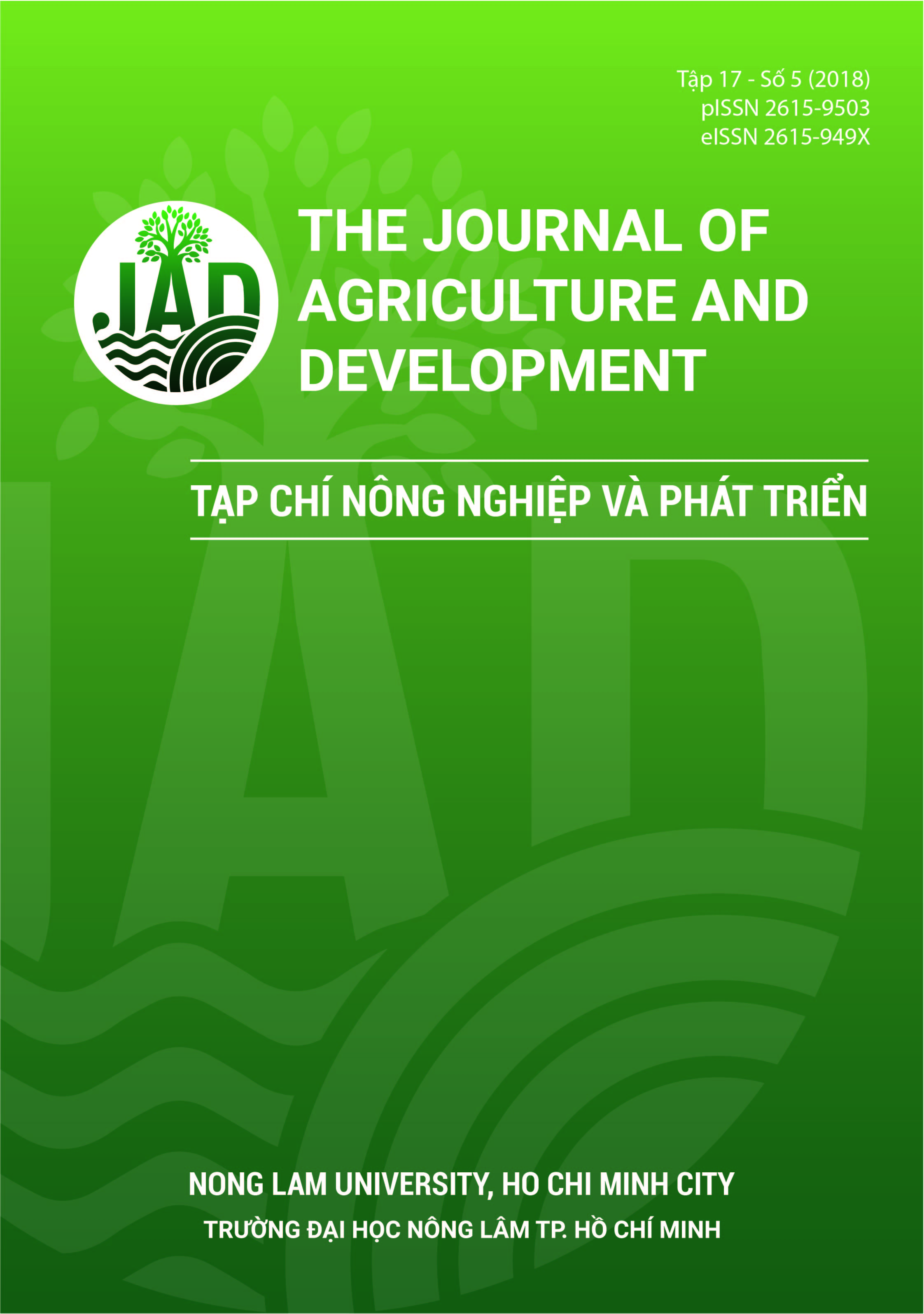A study on processing conditions of fermented acerola juice
Main Article Content
Abstract
This study investigated some key processing steps of fermented acerola juice, including variety, maturity, enzyme treatment, sugar concentration and fermentation and pasteurization conditions. One or two-factor experiments were randomly designed to determine the most suitable processing variables based on the investigated parameters, including the content of vitamin C, sensory quality and physicochemical properties of the resultant juice.
The results showed that the Brazil variety (Malpiphia emarginata D.C) had highest vitamin C content (1567.9 mg/100 g), followed by sour variety (Malpiphia glabra L.) (882.9 mg/100 g) and sweet variety (Malpiphia punicifolia L.) (630.4 mg/100 g). However, according to sensory evaluation results, the sour acerola juice after fermentation had the highest overall score, indicating to be the most suitable for processing. The fermented juice of sour acerola variety at 100% maturity had the highest sensory score and vitamin C content compared to other levels of maturity. In order to enhance the clarity of acelora juice, the addition of 0.15% pectinase enzyme (Pectinex ultra SPL, Novozymes) was the most effective compared to 0.05 and 0.1% (w/w) enzyme concentrations. The fermentation at 15oC in 48 hours with 22% sugar concentration and 0.1% commercial yeast (Saf-instant, France) obtained the highest quality fermented juice. The fermented product was pasteurized at 80oC for 10 minutes to stop fermentation process as well as to retain the color and taste of the fermented juice. The good quality of the fermented acerola juice, in terms of physicochemical, sensory and microbiological properties could be maintained for at least 6 months.
Article Details
References
Arroyo-López, F. N., Orli´c, S., Querol, A., & Barrio, E. (2009). Effects of temperature, pH and sugar concentration on the growth parameters of Saccharomyces cerevisiae, S. kudriavzevii and their interspecific hybrid. International Journal of Food Microbiology 131(2-3), 120-127. https://doi.org/10.1016/j.ijfoodmicro.2009.01.035
Delva, L., & Schneider, R. G. (2013). Acelora (Malpighia emarginata DC): Production, Postharvest handling, Nutrition, and Biological Activity. Food Reviews International 29(2), 107-126. https://doi.org/10.1080/87559129.2012.714433
Ha, T. D. (2000). Methods for sensory analysis of food. Ha Noi, Vietnam: Science and Technics Publishing House.
Horemans N., Foyer, C.H., & Asard, H. (2000). Transport and action of ascorbate at the plant plasma membrane. Trends in plants Science 5(6), 263-267. https://doi.org/10.1016/S1360-1385(00)01649-6
Johnson, P. D. (2003). Acelora (Malpighia glabra L., M. punicifolia L., M. emarginated D.C): Agriculture, production and nutrition. World Review of Nutrition and Dietetics 91, 67-75.
Lam, P. K. (2009). Vitamin C (Unpublished bachelor’s thesis). University of Technology, Ho Chi Minh City, Vietnam.
Lawless, H. T., & Heymann, H. (2010). Sensory evaluation of food: Principles and practices. New York, USA: Springer
Nguyen, M. V. (2004). Biochemical practice. Ha Noi, Vietnam: Science and Technics Publishing House.
Peddie, H. A. B. (1990). Ester formation in brewery fermentations. Journal of the Institute Brewing 96(5), 327-331. https://doi.org/10.1002/j.2050-0416.1990.tb01039.x
Rocha, I. F. O., & Bolini, H. M. A. (2015). Passion fruit juice with different sweeteners: Sensory profile by descriptive analysis and acceptance. Food Science and Nutrition 3(2), 129-139. https://doi.org/10.1002/fsn3.195
Sharma, H. P., Patel, H., & Sugandha. (2017). Enzymatic added extraction and clarification of fruit juices - A review. Critical Reviews in Food Science and Nutrition 57(6), 1215-1227. https://doi.org/10.1080/10408398.2014.977434
QCVN (Technical Regulations of Vietnam). (2010). QCVN 6-3: 2010/BYT: National technical regulations for alcoholic beverages. Ha Noi, Vietnam: Ministry of Health.
Stone, H., & Sidel, J. (2004). Sensory evaluation practices (3rd ed.). California, USA: Academic Press.
TCVN (Vietnamese National Standards). (2009). TCVN 8008:2009: Distilled alcohol-alcoholic content determination. Ha Noi, Vietnam: Ministry of Science and Technology.
Tran, L. T. B., Ton, N. M. N., & Dinh, T. N. T. (2004). Biochemical food experiment. Ho Chi Minh City, Vietnam: VNUHCM Publishing House.
Vendramini, A., & Trugo, L. (2000). Chemical composition of acelora fruit (Malpighia punicifolia L.) at three mination stages of maturity. Food chemistry 71(2), 195-198. https://doi.org/10.1016/S0308-8146(00)00152-7








